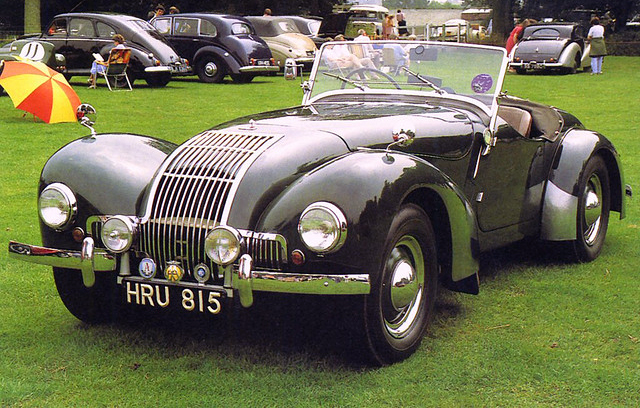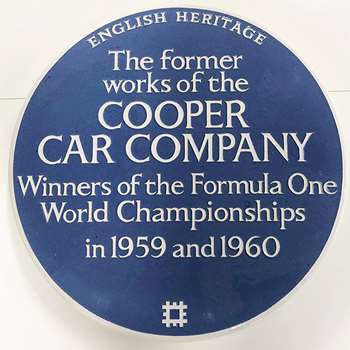Post
ARCHIVE | Allard to Vauxhall, the ABC
27 Apr 2020
Mark Prizeman looks at some of the pioneers of motoring who had their factories and workshops in London, and what became of them.
Motor factories today are large computer-operated sheds in distant industrial greenfield sites. It’s a far cry from the sheds, workshops and garages embedded in the fabric of London that produced a slew of new motor companies in two major bursts. Separated by the First World War, they between them created inventive marriages of engines and wheels from cycle cars to double-decker buses. There were around 66 car companies and 16 motorcycle names actually made in London, not including lorry, coach and bus makers. Most failed either in competition in Edwardian Britain or in the depression, but some survived, and it is instructive to see how the proximity of home and manufacture produced such creativity.
The reasons for starting to make cars, motorbikes or the bits that make them tick can be roughly be sorted into two: young men and women in a shed, or an established manufacturer diversifying briefly into ‘new technology’. London has a fine roster of the former, on which this investigation focuses, looking for surviving buildings and context.
A is for Allard: After experience with Ford in the Second World War, Sydney Allard made muscular cars, fitting large American engines into custom-made bodies. The only person ever to win the Monte Carlo Rally in a car named after themself, he also gained a podium position at Le Mans in an Allard car and built the first drag racer in Britain. All from a garage in Clapham High Street that is now a major party venue for the youth of south-west London. A short Pathé news clip shows him returning to smoggy Clapham from Monte Carlo in 1952 with recognisable buildings behind. The intact building now sells Yamaha motorcycles.
B is for Bentley: The Bentley brothers, HM and WO, imported Doriot, Flandrin & Parant (DFP) cars from France before the First World War and tuned them up in a former coachworks in Marylebone. In 1919 they embarked on making their own cars in the mews, following WO’s success with the rotary engine for the Sopwith Camel (Sopwith was founded in a railway arch next to the ballooning grounds on which Battersea Power Station and former gasworks now stand). Today, the mews building houses a commercial design premises.
A plot of land by the Edgware Road in Cricklewood, just before the North Circular, was acquired and building started in 1919. This site made Bentleys until 1931, when Rolls Royce bought the company. The buildings were later used by Smiths Instruments to make speedometers and clocks, until they were demolished in the 1980s. They are now occupied by Car Giant, a finance firm that lends money against old cars.
C is for Cooper: Father, son and son’s friend made a Formula 3 car by sticking a 1100cc v-twin John Alfred Prestwich (JAP) engine into a body made from shunting the two front ends of a Fiat Topolino together in the father’s workshop off the Ewell Road in Surbiton. The positioning of the engine behind the driver was so successful that to this day that is the layout of serious racing cars. The showroom survives but it is difficult to imagine them testing the cars up and down the now traffic-light infested Ewell Road. Today the distinctive showroom and forecourt is up for rent. A red plaque from the Transport Trust marks the location (update: an English Heritage blue plaque was installed on the site in 2018). YouTube has two 1946 Pathé clips — John Cooper road-testing a car round the Kingston by-pass in full traffic, followed by the preparation of the car at the garage.
And then....
J is for JAP: the most complete factory building to survive is in Tottenham. JA Prestwich started making instruments in his father’s shed in 1895 and made his first engine in 1902. His engines were used to power a long list of maker’s vehicles, including the first British aircraft, the AVRoe, in 1909. By 1911 he was in a position to move around the corner into purpose-built factory premises of substantial construction that survive at Tariff Road. Many important marques used his engines, the preeminent speedway engines until the 1960s. He was originally better known for making cinema projectors and worked with early filmmakers. After the Second World War, JAP began making pencils as well.
M is for Matchless: Of all the vanished London factories, the most impressive was the Matchless factory in Burrage Grove, Plumstead, which by the 1960s was the largest motorcycle factory under one roof in the world, making Matchless, AJ Stevens (AJS) and Norton machines until the late Sixties, when it folded. A plaque on a housing estate is perhaps best only visited via Google Earth.
V is for Vauxhall: The only vehicle company named after a bit of London, even though it escaped to Luton after a year or so spent making iron goods near the Nine Elms railway yard. Customers took their newly acquired Vauxhall chassis and engine to one of London’s established coach-building trades who built the bodywork to whatever configuration took their fancy. Thus, a web of connections evolved between car-maker, coachbuilder and customer. This all took place in Great Portland Street, or "Motor Street", as it was known, where all the makers and dealers had their showrooms. Speedometer House at 179, built in 1913 by Smiths Motor Accessories (established clock makers from the Strand), made speedometers on the top floor — fitted to most British cars and motorbikes until the 1970s — and carburettors in the basement. The building still stands but is not distinctive. No other trace of Motor Street remains.
Mark Prizeman is an architect who took his first car completely to bits aged 18 and then bought a Royal Enfield for £10

